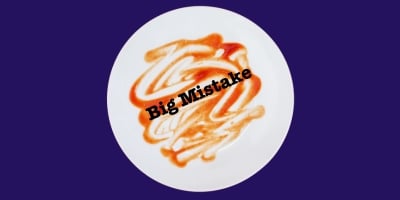Selling to foodservice is different from selling in retail, and the channel requires a whole other...
Get By with a Little Help: A Solid Executive Team
Even though we live all across the country, the Elohi executive team meets regularly to shut out the noise and listen to our company’s health. At least quarterly, we set aside time to come together virtually; at least once a year, we spend two or three days together in person. This practice and the strong working relationships that have come out of it have helped us weather both the ordinary storms of corporate life and the extraordinary ones, like COVID. They’re the practices that will help us survive – even prosper – regardless of whatever economic times may lie ahead of us.
Candid Executive Team Meetings Help Foster Trust
First, we use those meetings to cover whatever has happened recently in the life of the company. What worked? What flopped? What might have been successful, if only we’d done something a little differently? What did we manage to pull out of the fire, even though it could’ve gone badly? We talk about our failures and own our successes, too, with nothing off the table, nothing off limits. We get candid about the business, with no hard feelings and a whole lot of honesty.
That opportunity to slow down and even stop, along with some serious truthfulness, allows us the same kind of 360-degree view of ESA that we offer clients of their own companies. Just like our clients, we benefit by taking a holistic view of what’s happened to and with us.
It also helps us build a cross-functional team, where everyone knows what’s going on in their own department and in other departments. We coordinate and cooperate more effectively across departments because of these meetings, and in our day-to-day operations, we communicate more smoothly and efficiently. They give us the background and context, so that when something breaks, we can start to fix it without missing a beat, or when a new opportunity pops up, we can move decisively.
CEO and Founder -- Not the Same Thing
These meetings and conversations also help us trust one another, professionally, to do our jobs and to play our roles in ESA’s success. As the Chief Executive Officer, Dimitra keeps us moving forward down the road. I trust her to execute – to watch the ground just in front of our feet and make sure that everything works together and gets done. She runs the company, and I trust her expertise and her diligence. Because of her, I can look up, toward the skyline.
Dimitra also keeps a pair of blinders on me, though, so that I can scan the horizon for potential destinations without getting pulled off course. During limiting economic times, she tends to pull the blinders in a little tighter and my vision becomes more about seeing a way for us through the crisis. When things open up, the blinders – and my view -- can widen to include more new ideas and opportunities. She trusts my ability to see where we might go next, and because I’m doing that, she can focus on maintaining our solid footing in the present.
Trying to play both roles – operator and visionary – can overwhelm even the most energetic and dedicated founder. Inevitably, one role or the other eventually gets neglected. That’s one of the reasons we offer drop-in or fractional team members – CEOs, CFOs, CMOs, Heads of Sales -- to our clients.
In good times, a knowledgeable team allows each member to play to her greatest strengths, rather than multi-tasking. In times of economic downturn or turmoil, on the other hand, retail sales may go up, while foodservice sales go down, and then all of it can reverse itself rapidly when things rebound. Leadership matters in chaotic times -- the sailing-the-ship leadership Dimitra provides for ESA, and the scanning-the-horizon leadership I try to provide, as well.
A drop-in or fractional CEO can keep operations on solid ground and costs low during the crisis, so that a visionary founder can navigate through the turbulence and the company can recover quickly on the other side. There’s always an other side of whatever the crisis, and a CEO and founder who work well together (but aren't the same person) can see your company through.
Strategizing the Future
Once we’ve covered the past and the present, we use our executive team meetings to plan the future.
What services should we keep? Do they need to be changed or tweaked at all?
Which new ones should we add?
Which services should we discontinue or completely dismantle and re-assemble?
Do we have projects that can become full-time services?
We discuss the potentialities of the future, and answer some of the “what if” questions ahead of time. In the next two years, if XYZ happens, then we’ll do this or that and maybe even that other thing. We walk ourselves through the questions I talked about last week – envisioning the best-case, worst-case and most-likely scenarios for each of the potential problems we imagine.
Some of those scenarios never arise, of course, but like a fire drill, the solutions we come up with during these meetings help us prepare for whatever scenarios do arise. We’ve still practiced finding solutions and seen the ways to prepare and prevent trouble from coming our way. We get the benefits and experience of working together, without the actual crisis.
Solid Executive Team Leads to Solid Execution
Emergency meetings when it all hits the fan won’t produce the same results as building a team and meeting regularly, during good times and bad. The ordinariness of these meetings builds our relationships and professional comfort levels, so that our honesty at one meeting allows for more forthrightness at the next. When we need to compartmentalize during troubled times, trusting our teammates allows each of us to focus on our specialties and areas of responsibility, so that we can all make it through together.
Our team at ESA draws from a deep knowledge and well of experience across the foodservice channel, and from the strength of our confidence in one another. Let us help make sure your team does, too.
.png?width=400&height=400&name=Untitled%20(600%20%C3%97%20600%20px).png)



.jpg?height=200&name=2024%20ESA%20LinkedIn%20Images%20(8).jpg)